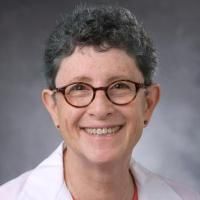Long-Term Functional Outcomes following Hematopoietic Stem Cell Transplant for Early Infantile Krabbe Disease.
Date
2018-06-19
Journal Title
Journal ISSN
Volume Title
Repository Usage Stats
views
downloads
Citation Stats
Abstract
Allogeneic hematopoietic stem cell transplantation (HSCT) can retard the progression of early infantile Krabbe disease (EIKD). Superior outcomes are achieved if HSCT is performed prior to the onset of symptoms, however little information is available about the long-term outcomes in surviving patients. We now describe functional outcomes in pre-symptomatic infants who underwent HSCT for EIKD at ≤2 months of life. Records of the 19 patients who underwent HSCT for EIKD at ≤2 months of age from 1996-2010 were reviewed. Long-term functional outcomes were compared between those transplanted at <30 days and ≥30 days of life. Median age at transplant was 27 days (range 19-61). Median follow-up of the cohort was 12.6 years. Overall survival at 5 and 10 years post-transplant was 84.2% (95% CI:58.7-94.6%) and 78.6% (95% CI:52.5-91.4%), respectively. More favorable outcomes were seen in patients who underwent HSCT at <30 days of age, particularly in domains of mobility (p=0.01), communication (p=0.02), and feeding (p=0.008). Improved functional outcomes were observed when HSCT was performed in the first month of life, defining a critical period for intervention. These results support the implementation of newborn screening to enable rapid diagnosis and early treatment of infants with EIKD.
Type
Department
Description
Provenance
Citation
Permalink
Published Version (Please cite this version)
Publication Info
Allewelt, Heather, Mahsa Taskindoust, Jesse Troy, Kristin Page, Susan Wood, Suhag Parikh, Vinod K Prasad, Joanne Kurtzberg, et al. (2018). Long-Term Functional Outcomes following Hematopoietic Stem Cell Transplant for Early Infantile Krabbe Disease. Biology of blood and marrow transplantation : journal of the American Society for Blood and Marrow Transplantation, 63. pp. S97–S97. 10.1016/j.bbmt.2018.06.020 Retrieved from https://hdl.handle.net/10161/17210.
This is constructed from limited available data and may be imprecise. To cite this article, please review & use the official citation provided by the journal.
Collections
Scholars@Duke

Jesse David Troy
I am the Associate Director of Graduate Studies for the Master of Biostatistics program. I am also an instructor in the Clinical Research Training Program. I work on research studies in cancer therapeutics and palliative care at the Duke Cancer Institute.

Vinod K. Prasad
1. Expanding the role of umbilical cord blood transplants for inherited metabolic disorders.
2. Impact of histocompatibility and other determinants of alloreactivity on clinical outcomes of unrelated cord blood transplants.
3. Studies to analyse the impact of Killer Immunoglobulin receptors on the outcomes of hematopoietic stem cell transplantation utilizing haploidentical, CD34 selected, familial grafts.
4. Propective longitudinal study of serial monitoring of adenovirus in allogenic transpants(SMAART)patients.
5. Use of mesenchymal stem cells for the treatment of GVHD

Joanne Kurtzberg
Dr. Kurtzberg is an internationally renowned expert in pediatric hematology/oncology, pediatric blood and marrow transplantation, umbilical cord blood banking and transplantation, and novel applications of cord blood and birthing tissues in the emerging fields of cellular therapies and regenerative medicine. Dr. Kurtzberg serves as the Director of the Marcus Center for Cellular Cures (MC3), Director of the Pediatric Transplant and Cellular Therapy Program, Director of the Carolinas Cord Blood Bank, and Co-Director of the Stem Cell Transplant Laboratory at Duke University. The Carolinas Cord Blood Bank is an FDA licensed public cord blood bank distributing unrelated cord blood units for donors for hematopoietic stem cell transplantation (HSCT) through the CW Bill Young Cell Transplantation Program. The Robertson GMP Cell Manufacturing Laboratory supports manufacturing of RETHYMIC (BLA, Enzyvant, 2021), allogeneic cord tissue derived and bone marrow derived mesenchymal stromal cells (MSCs), and DUOC, a microglial/macrophage cell derived from cord blood.
Dr. Kurtzberg’s research in MC3 focuses on translational studies from bench to bedside, seeking to develop transformative clinical therapies using cells, tissues, molecules, genes, and biomaterials to treat diseases and injuries that currently lack effective treatments. Recent areas of investigation in MC3 include clinical trials investigating the safety and efficacy of autologous and allogeneic cord blood in children with neonatal brain injury – hypoxic ischemic encephalopathy (HIE), cerebral palsy (CP), and autism. Clinical trials testing allogeneic cord blood are also being conducted in adults with acute ischemic stroke. Clinical trials optimizing manufacturing and testing the safety and efficacy of cord tissue MSCs in children with autism, CP and HIE and adults with COVID-lung disease are underway. DUOC, given intrathecally, is under study in children with leukodystrophies and adults with primary progressive multiple sclerosis.
In the past, Dr. Kurtzberg has developed novel chemotherapeutic drugs for acute leukemias, assays enumerating ALDH bright cells to predict cord blood unit potency, methods of cord blood expansion, potency assays for targeted cell and tissue based therapies. Dr. Kurtzberg currently holds several INDs for investigational clinical trials from the FDA. She has also trained numerous medical students, residents, clinical and post-doctoral fellows over the course of her career.
Unless otherwise indicated, scholarly articles published by Duke faculty members are made available here with a CC-BY-NC (Creative Commons Attribution Non-Commercial) license, as enabled by the Duke Open Access Policy. If you wish to use the materials in ways not already permitted under CC-BY-NC, please consult the copyright owner. Other materials are made available here through the author’s grant of a non-exclusive license to make their work openly accessible.
